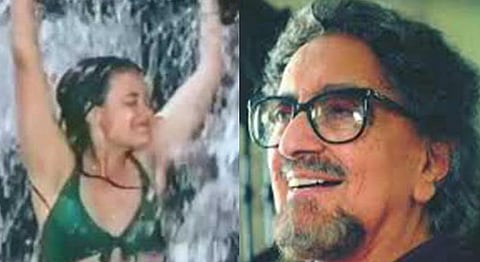
- HOMEGROWN WORLD
- #HGCREATORS
- #HGEXPLORE
- #HGVOICES
- #HGSHOP
- CAREERS
- ABOUT US
- CONTACT US

After a stressful day of work, few things are as satisfying as cosying up on the couch with a late snack and blanket, TV remote in hand, skimming through for the best stuff. And few things are as exasperating as those endless commercial breaks bent on keeping you from the drama you so desperately crave.
But little do we know how massive the impact of advertisements has been on Indian culture. Ads bleed through to every nook and corner of the country. So strong is the place of branding in our society that “Colgate” is just another word for “toothpaste,” Airtel’s iconic tune is as good as any Bollywood song and half the public would swear on their lives that Parle G is scientifically proven to increase your IQ. From the iconic jingles we instinctively hum to age-old taglines we drop in everyday conversation – advertising is a deeply creative medium that has shaped us in far more ways than simply through our daily consumer trends.
No one recognized that better than Alyque Padamsee, fondly called the Brand Father of Indian Advertising, a legend who truly transformed our experience of Indian television. Known also for his success in theatre and acting (particularly his role in the 1982 Richard Attenborough classic, Gandhi), Padamsee was a fresh, forward-thinking visionary who tapped into creative spaces that no one in India had ever ventured into – with end results still cherished today. With his passing this weekend at the age of 90, the fascinating story of the man behind the big leaps in India’s advertising industry is worth celebrating.
Padamsee’s most memorable work is undoubtedly the Liril girl from 1985: bikini-clad Karen Lunel dancing, free and fearless, in a waterfall. At a time where most soap ads were preachy and family-centric (and most of television was conservative to begin with) Padamsee’s progressive work was as refreshing, figuratively, as it was literally.
In the same vein, he brought us the iconic Lalita Ji for Surf Excel, a brand whose image mushroomed only because of the strong foundations Padamsee built for it. “Acche cheez or saste cheez mein pharak hota hai,” says the sari-clad Lalitaji, instantly recognisable advice used by mothers everywhere even today. Encouraging sensible shopping habits has never been an easy task, but this one certainly changed how India opened up to commodities at the turn of the century.
The true dexterity of Padamsee’s work was in his ability to reflect society’s beliefs while simultaneously pushing its boundaries, like in the radical ad for Kamasutra Condoms that featured Mark Robinson and Pooja Bedi. Condom ads at the time – when and if they even got airtime – were informative and strictly health-related. By merely introducing the idea of pleasure and making love (not to mention, sensual depictions of sex that did not get censored), Padamsee had already knocked down several elephants in several rooms.
“[He] brought flamboyance and swagger to the advertising industry,” said fellow ad-man Piyush Pandey to the Hindustan Times. “He was ahead of his time, so people thought some of his work was controversial. But he remained bold and fearless. He was a good leader and inspired young people, giving them the confidence to play on the front foot.”
Through the course of his career in advertising, Padamsee built over a 100 brands and ad campaigns, including his own agency, Lintas India. His other memorable ads included the beloved Humara Bajaj scooter ad, the lighthearted and funny Cherry Blossom shoe polish ad, and the technologically progressive MRF Muscle Man. His lesser-known feats included several public service campaigns like the prevention of eve-teasing, AIDS and sexual molestation. He was an activist and advocate on the Citizens for Justice and Peace Committee, the Citizens Action Group as well as on the advisory council for IIT Bombay and the Prime Minister’s AIDS Task Force.
Today, advertising is as lucrative a profession as any, with millions of young creatives flocking to work at big ad agencies. In Padamsee’s time, even using video was a huge accomplishment, but now the industry has to struggle to live up to the increasing demand for new ideas. With the world of TV and advertising having become so formulaic, repetitive, and many times even problematic, it is certainly a challenge to frame media with nuance and authenticity. But storytelling is a profession that never gets old, and Indian media has a long way to go.
At the risk of being the next profitable trend, many socially conscious and progressive ads have made positive strides within the Indian psyche, not unlike the inspirational value that icons like Alyque Padamsee would undoubtedly appreciate having. For the millennial generation searching for a work-life balance with the potential to make a powerful impact in society, advertising can be a great place to be. “It’s a fascinating profession which also pays for the bread, butter and BMW,” says Padamsee in his autobiography, My Double Life: My Exciting Years in Theatre and Advertising. “Where else can one write words, shoot pictures and turn imagination into reality but in advertising, and get paid for it handsomely?”
If you liked this, we suggest you read:
